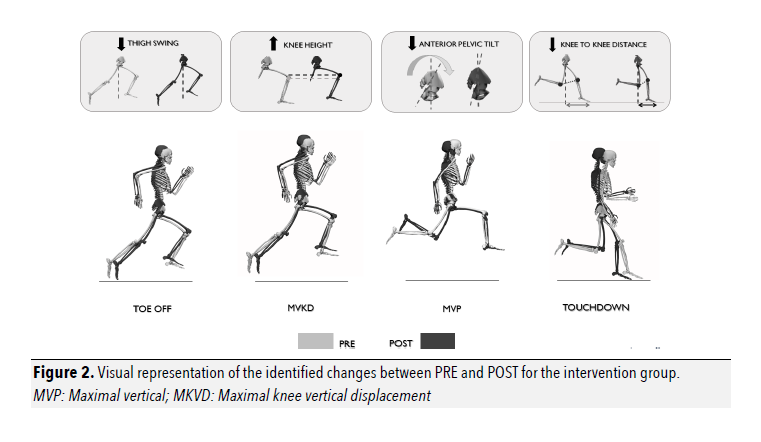500 Words a Week - Paper Takeaways - Can we modify maximal running speed posture?
For this blog, I’m going to discuss some brief takeaways I got from the paper mentioned above.
The premise for this paper is that sprinting kinematics have been linked to hamstring injury occurrence and performance. Despite a greater focus on hamstring strengthening and the popularity of specific hamstring strengthening exercises, for example nordics, we are still seeing an increasing trend in hamstring injuries. An anteriorly titled pelvis position during sprinting puts added strain on the hamstrings, so this paper aims to reduce strain on the hamstrings by decreasing the amount of anterior pelvic tilt. The main method by which the authors intended to reduce this anterior tilt position was by focusing on a more front-side oriented sprint technical model. This is characterized by a more upright trunk position, a higher maximum vertical knee position during swing phase and lower between-knee distance at touchdown, with shorter touchdown distance from the body’s centre of mass at initial contact. This may be more easily visualized by looking at the below image from the paper, showing some of the technique changes from the intervention.
The is where I got my first takeaway, in that are we spending too much time where we are comfortable, and can accurately and easily gauge improvements (e.g eccentric hamstring strength through nordics), then working on improving our athlete’s movement abilities. Also when looking to improve our athlete’s movement abilities we should have a strong technical model that we are trying to achieve, while allowing a certain amount of bandwidth as ultimately every athlete will have their own movement idiosyncrasies.
I enjoyed how this paper laid out the training programme (shown above) in detail and the accompanying video.
Quick link to the exercise videos in the programme. Watch at slowest speed in settings on youtube, to get a better look at the exercises.
I think in the past when I have programmed sled work it has been included in the gym session rather than on-field just prior to actually performing some acceleration work. I could try to put this on facilities at the time as an excuse, however as with most things, a bit more effort and preparation would have allowed this to happen. We have used banded sprints in the past which do allow some form of resistance, but the issue is in truly trying the gauge the stimulus level each athlete will get when using bands.
Placing different emphasis on the scissor drills, one for frequency and the other for distance is something I hadn’t thought about before.
I think the implementation of the coordination exercises (shown in programme and video) in the gym was great, this was/ is an area I’ve been guilty of neglecting and it’s one I can see implemented very easily.
When we see the athlete doing the pogo exercises, we can see him using a medicine ball. I like this not just for the added intensity but having the MB out in front also ensures the athlete keeps an upright posture. A common error I’ve seen when implementing pogos, is that certain athletes have poor trunk control and are flopping all over the place.
The large amount of wicket use was interesting. It’s something I’ve used in the past, but again from reading this paper, it’s definitely something I wasn’t very consistent with.
Not only did the authors succeed in training the athletes to have a more neutral pelvic position during sprinting that reduced strain on the hamstrings, they also improved sprint performance outcome measures. Further highlighting the need to place a significant emphasis on getting our athletes to sprint with efficient technique from an injury reduction and performance outcome standpoint.
I would encourage you to read the full paper, to gain a greater insight and understanding beyond my brief takeaways.

